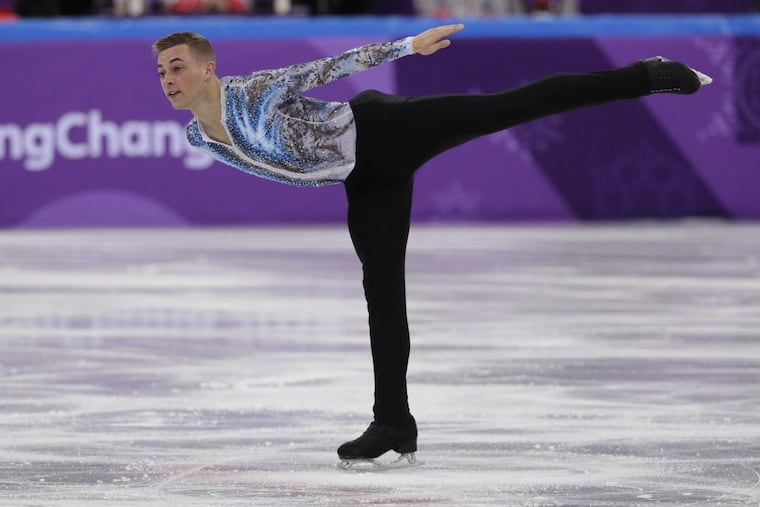Male Olympic figure skaters open up about eating disorders
In the United States, 30 million people suffer from an eating disorder.

With the 2018 Winter Olympics in full swing, there have been plenty of stories about the athletes' struggles and triumphs to compete on the world stage.
Among the struggles athletes increasingly are talking about: eating disorders.
Recently Canadian figure skater Gabrielle Daleman who finished 17th at the 2014 Sochi Olympics, revealed that she has suffered from an eating disorder. In November, U.S. skater and Olympic medal contender Gracie Gold withdrew from the U.S. figure skating championships citing ongoing treatment for depression, anxiety, and an eating disorder, the Los Angeles Times reported. And Russian figure skater Yulia Lipnitskaya, who won a gold medal in Sochi, retired in August after a three-month treatment for anorexia, NBC reported.
While stories about anorexia and bulimia nervosa in female athletes have been well-documented, more male athletes now acknowledge they also grapple with food issues.
Scranton-born figure skater Adam Rippon opened up to the New York Times about the "quiet starvation" some male skaters endure to stay thin.
Two years ago, Rippon lived on a daily diet of three slices of whole-grain bread topped with small pats of margarine, washed down with three cups of coffee sweetened with six packs of Splenda.
"It makes me dizzy now to think about it," Rippon told the Times.
Rippon is not the only male skater to admit to skimping on food to maintain a slim figure. Gold medalist Brian Boitano said he rarely ate more than 1,800 calories per day while burning up far more than that. NBC skating analyst Johnny Weir, 33, a two-time Olympian from Newark, Del., said he consumes one meal a day, the Times reported.
What drives athletes to starve themselves?
"Winning," said Stacey C. Cahn, clinical psychologist at the Wellness Center of Rowan University. "The stakes are so high."
At that level of competition, athletes will take any advantage they can find, Cahn said. The athletes live in an "insulated bubble" and spend more time with coaches and other athletes — a setting where eating disorders can become normalized — than family, she said.
Athletes in sports that are weight-conscious like wrestling, horse racing, and skating are at higher risk, Cahn said. And it's not just about looks.
"It is easier to have a light body when going up to spin in the air as opposed to a heavier body," she said.
Male athletes who compete in seasonal sports such as wrestling may engage in self-induced purging while competing, but not during the rest of the year. Still, the behavior could be a gateway to a more serious eating disorder. Weight-related obsessions can stay with people long after they retire from sports, she said.
In the U.S., 30 million people of all ages suffer from an eating disorder, according to the National Association of Anorexia Nervosa and Associated Disorders.
In addition to social and sports pressures, genetics too may play a part in eating disorders, Cahn said.
"There is a biological component that can run in families," Cahn said. Among people with anorexia, 40 percent also have obsessive compulsive disorder, she said.
"If I had a strong family history of anorexia and my daughter wanted to study ballet, it would give me pause," Cahn said. She suggested that parents facing such a dilemma try to limit additional risk factors and have discussions with the child and physician.
Rippon's story also illustrates that athletes who have eating disorders may not even realize they could perform better by improving their nutrition.
Last year after Rippon broke his left foot, an injury he attributed to his poor diet, he started working with a sports dietitian with the U.S. Olympic Committee.
As his diet improved, so did Rippon's stamina.
"I didn't realize I was so tired all the time," he told the Times.